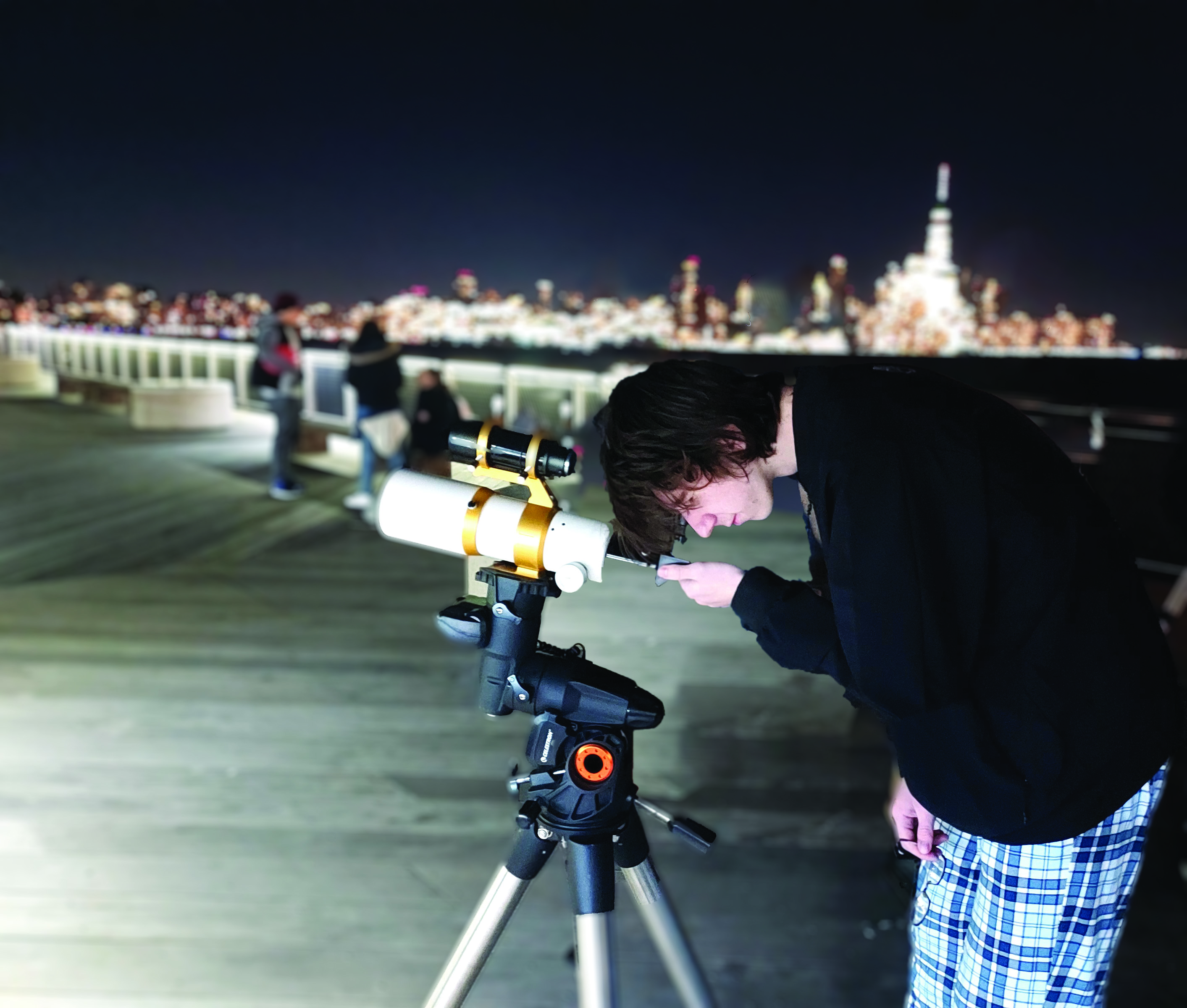Seeing Past the City Lights
Spring
2023
Interactions - SPS Chapters in Action
Seeing Past the City Lights
Erin McGee, Jordan Cory, and Anastasia Pergament, SPS Members, Stevens Institute of Technology
Living close to New York City has its advantages, but stargazing is not among them. Nighttime light pollution and a lack of open space make sure of that! Despite the challenges, our SPS chapter at Stevens Institute of Technology has found that city skywatching is possible, and it’s a great excuse to get outside and build community while appreciating the universe.
In November we invited SPS members, astronomy students, and our physics department to gather just after dark at Pier C Park, located right on the Hudson River walkway across from New York. At that time of year, it was dark enough in the early evening to see Jupiter and Saturn at the same time, even with a full moon.
The event, run by professor Ting Lu, made use of telescopes from the physics department and our SPS chapter. We had two main goals: show astronomy students the objects they were studying in real life, and grow interest in space in the general community.
“No matter how many times you've seen the rings of Saturn or the colored bands of Jupiter and its moons, you'll be amazed all over again every time you peek through the eyepiece,” says Professor Lu.
One of the goals of our SPS chapter is to build community, and events like this one help connect students who share an interest in physics and astronomy, no matter their major. It sparked a deeper curiosity in many attendees, and it was a fantastic leadership and mentoring opportunity for the upper-level physics students who ran the telescopes and shared their astronomy knowledge.
For those seeking to get involved in skywatching, urban or otherwise, the best place to look is often right in your own community. For example, our area has great resources, including the Amateur Astronomers Association of New York, which hosts observing events and free planetary science classes open to the public. Many are held at parks and observatories in the city. They also publish “skylights”—moon phases and constellations to look for each month.
Our chapter plans to continue helping people be inspired by the night sky. We also enjoy it as a chapter—each semester we go camping, away from city light pollution, to observe and photograph the planets and stars through telescopes. This semester we’re going farther than usual—to Cherry Springs State Park, a dark sky park in northern Pennsylvania.
Whether you have an avid interest in astronomy or just enjoy getting outside, there is something to be gained from looking up—even in a city. “I think people are drawn to astronomy because of the vastness of space and all the fascinating objects out there,” says Professor Lu. “Even within our solar system, there are objects with strikingly different properties. Not to mention that our solar system is just one of the billions of star systems in our galaxy, and there are so many other galaxies in the universe!”


